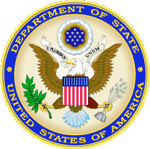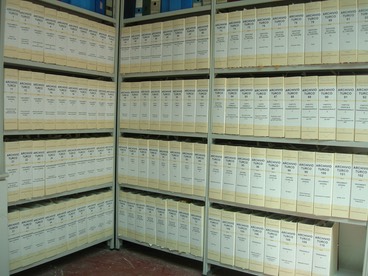 |
US. DEPARTMENT OF STATE
International Narcotics Control Strategy Report, 1996
Released by the Bureau for International Narcotics and Law Enforcement Affairs, U.S. Department of State - Washington, DC, March 1997
AFGHANISTAN
I. Summary
According to USG estimates, Afghanistan is the world's second largest producer of opium poppy. The US estimates that production in 1996 was 1,230 mt of opium, down from 1,250 mt in 1995. Continued warfare, extreme poverty and the absence of a central government with effective administrative control over the entire country precluded meaningful progress on narcotics control in Afghanistan during 1996. By the end of the year, over 90 percent of Afghanistan's opium production was in lands controlled by the Taliban, a movement that started among religious students over two years ago. In November, the Taliban officially condemned use and production of drugs, but the USG received contradictory reports about Taliban intent. Taliban leaders told USG officials that they are not prepared to enforce a ban on poppy cultivation until farmers have been given the opportunity to earn an alternative income. There was no indication that major narcotics traffickers were arrested or that efforts were undertaken to interdict large shipments of narcotic drugs or precursor chemicals anywhere in Afghanistan in 1996. Afghanistan is a party to the 1988 UN Convention.
I. Status of Country.
According to USG figures, Afghanistan is still the second largest opium producer in the world, with about 30 percent of global production. Afghanistan's porous borders with Pakistan, Iran and Central Asia, combined with its rugged topography and lack of law enforcement, make it one of the least controlled narcotics trafficking areas in the world. Since little remains of Afghanistan's banking and commercial structure, its war-torn economy cannot accommodate sophisticated money laundering schemes. Numerous heroin and morphine base laboratories operate along the border with Pakistan. Major shipments of precursor chemicals reportedly enter Afghanistan from Central Asia via the borders at Termez and Torghundi; they are then shipped to heroin refineries in Afghanistan or Pakistan. Precursor chemicals in large quantities also have entered Afghanistan from Europe and India via the Persian Gulf States and Ariana Afghan Airlines flights. Although reliable figures were unavailable, abuse of hard drugs does not appear to be a significant problem.
III. Country Actions Against Drugs in 1996
Policy Initiatives. No national government exists in Afghanistan, so no country-wide initiatives were undertaken during the year. The Taliban movement, which at year-end controlled approximately two-thirds of the country, announced in November its willingness to recognize Afghanistan's responsibilities as a signatory to the 1988 UN Convention. The Taliban representatives condemned use and production of illicit drugs, but took few steps to limit production and trafficking of narcotics, and, in fact, rely on opium tax as a substantial source of income.
Accomplishments. There were no reliable indicators of significant drug control accomplishments anywhere in Afghanistan during 1996. Despite the modest two percent decrease in cultivation of opium poppy, cultivation remained widespread. Sporadic civil war and the absence of an effective central government, and little commitment by any government authority to strong antinarcotics action resulted in no meaningful effort to control narcotics production and trafficking. While the Taliban banned opium production in late 1996, it made no effort to enforce this ban. It also condemned cannabis cultivation. Destruction of 100 hectares of cannabis in Maywand district of Kandahar was confirmed by Mercy Corps International (MCI). There were reliable reports that the Taliban punished some hashish users.
Law Enforcement Efforts. There was no consistent narcotics law enforcement effort in Afghanistan in 1996. In two separate enforcement actions, the Taliban arrested a total of five heroin traffickers at the airport in Jalalabad (at least four of whom later were released) and claimed to have destroyed heroin laboratories in Nimroz and Nangarhar provinces and arrested the lab operators. The lab in Nangarhar, however, resumed operation. No known action was taken to interdict caravans transporting large shipments of opiates and hashish or to control shipments of precursor chemicals into Afghanistan. Law enforcement infrastructure is virtually non-existent. Punishments for narcotics offenses tried by Taliban courts are based on strict shariat (Islamic) law. Judicial authorities have wide discretion in determining punishment for crimes like drug smuggling, but were fairly consistent with penalties for drug use.
Morphine-base labs located in Afghanistan along the border with the Pakistani province of Baluchistan operate without interference. That area has been under Taliban control for over two years.
Corruption. There are persistent reports that the leaders of all the warring Afghan factions actively encourage, facilitate, or engage in the illicit production or distribution of narcotic drugs in order to obtain funds for their cause. Reports from many sources state that the Taliban and other factions tax opium poppy and other agricultural products in areas they control. Major drug traffickers reportedly associate with leaders of all Afghan factions.
Treaties and Agreements. Afghanistan is a party to the 1988 UN Convention. The UNDCP tripartite agreement with Pakistan and Iran will include Afghanistan when a central government is formed and peaceful conditions prevail.
Cultivation and Production. USG data show a 2.04 percent decrease in the area of opium cultivation from 38,740 hectares in 1995 to 37,950 hectares in 1996. It indicates a 1.6 percent decrease in opium production from 1,250 mt in 1995 to 1,230 mt in 1996. UNDCP estimates show an increase in cultivation of 5.7 percent. According to UNDCP's figures, the average estimated yield for 1995-96 was 39.56 kgs per hectare. UNDCP has been able to conduct yield studies in Afghanistan, which the USG has not been able to do for many years.
The two top opium poppy-growing provinces of Afghanistan were Helmand and Nangarhar. In 1995-96, approximately 57 percent of the total cultivated area was in Helmand and 22 percent in Nangarhar. According to USG figures, there was a 5.07 percent decrease in poppy planted in 1996 in Helmand province and a 9 percent increase in land under cultivation in Nangarhar. The increase in Nangarhar contrasts with a significant decrease in cultivation in that province during the 1994-95 season. The then governor and shura (ruling council) expected that the eradication effort would elicit funding from donors for alternative development within a few months. When funding failed to materialize, eradication ceased.
Available data show that, in 1995-96, farmgate prices for opium gum decreased, probably due to a glut in supply, and that shortages of staple food crops, such as wheat, increased prices for grains. As a result of the supply and demand situation, production leveled off in 1996 after dramatic annual increases during the early 90s.
Drug Flow/Transit. Heroin and morphine base are transported along the following routes: 1) from laboratories in southern Afghanistan to Turkey either through the Central Asian countries or through Iran; 2) from southern Afghanistan to Pakistan's Makran Coast where it is placed on ships and transported to Turkey; 3) from laboratories in eastern Afghanistan into Pakistan's North West Frontier Province; 4) from newly established laboratories in northern Afghanistan into the Central Asian countries; 5) from Nangarhar province's Jalalabad Airport to India; and 6) reportedly, via Balkh Air, a newly established airline operating from Mazar-E-Sharif to the central Asian countries.
Part IV. US Policy Initiatives and Programs
Policy Initiatives. USG representatives made counternarcotics one of the most important areas of discussion with all Afghan faction leaders, but particularly the Taliban, stressing the need to crack down on trafficking, cultivation and production. The USG provided an additional $100,000 in support of the UNDCP Nangarhar Narcotics Control Unit and $200,000 for a continuation of crop substitution projects implemented by the American NGO, MCI, in Helmand province. The USG also earmarked $800,000 of its FY-96 contribution to UNDCP for projects in Afghanistan. The USG worked closely with UNDCP to coordinate proposed poppy control projects for 1997.
USG counternarcotics goals and objectives for Afghanistan include:
The Road Ahead. Reducing the cultivation of opium poppy, with the resultant decrease in trafficking, remains the USG's top priority. The USG will seek ways to advance it counternarcotics interests, including working with UNDCP and reputable NGOs to provide counternarcotics programs in Afghanistan. Although no national law enforcement entity exists, the USG plans to explore initiating a small project to train and equip some individuals at the provincial level. DEA will offer to exchange narcotics-related information with Afghan officials and will offer to conduct joint operations against major narcotics refineries and trafficking organizations.


